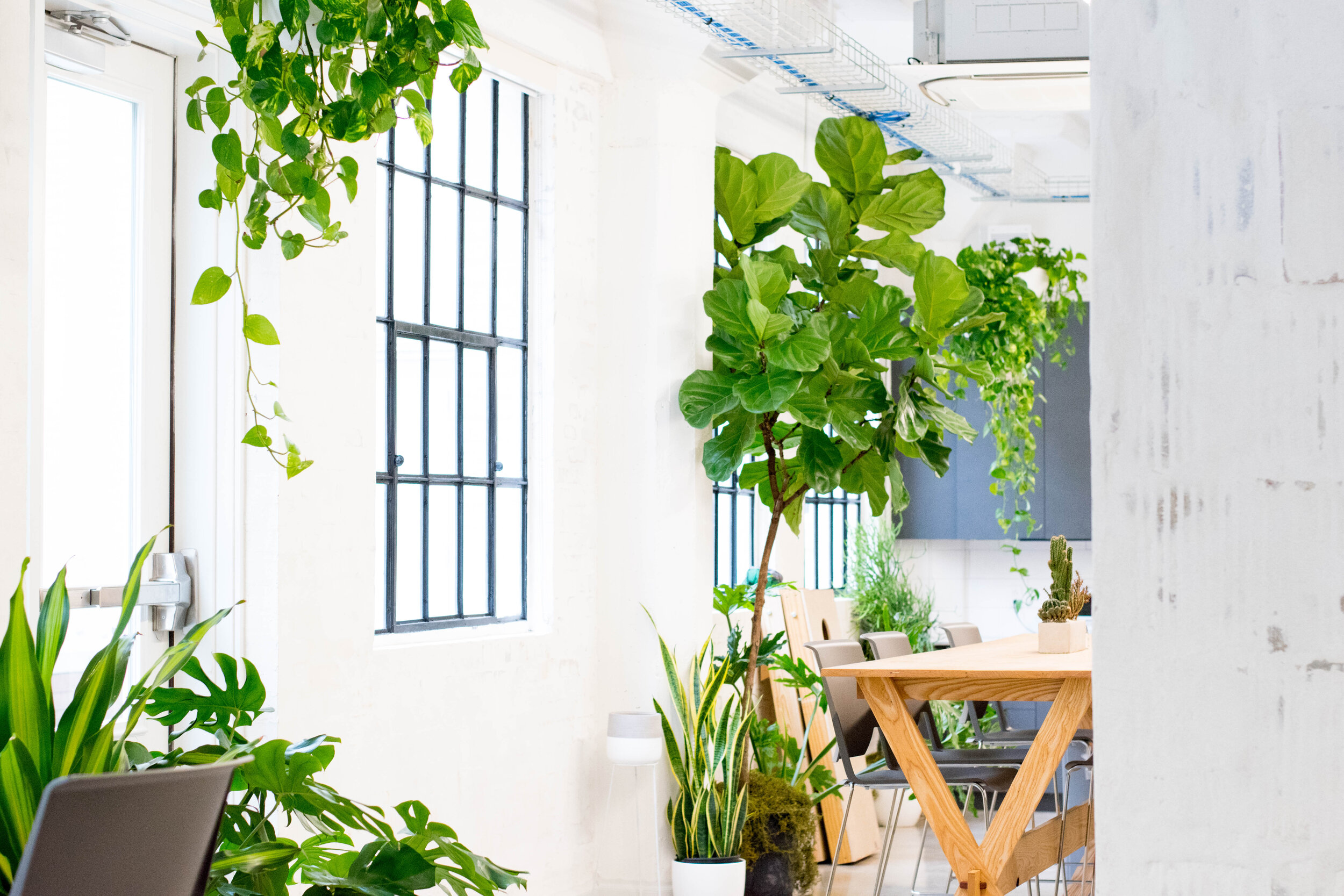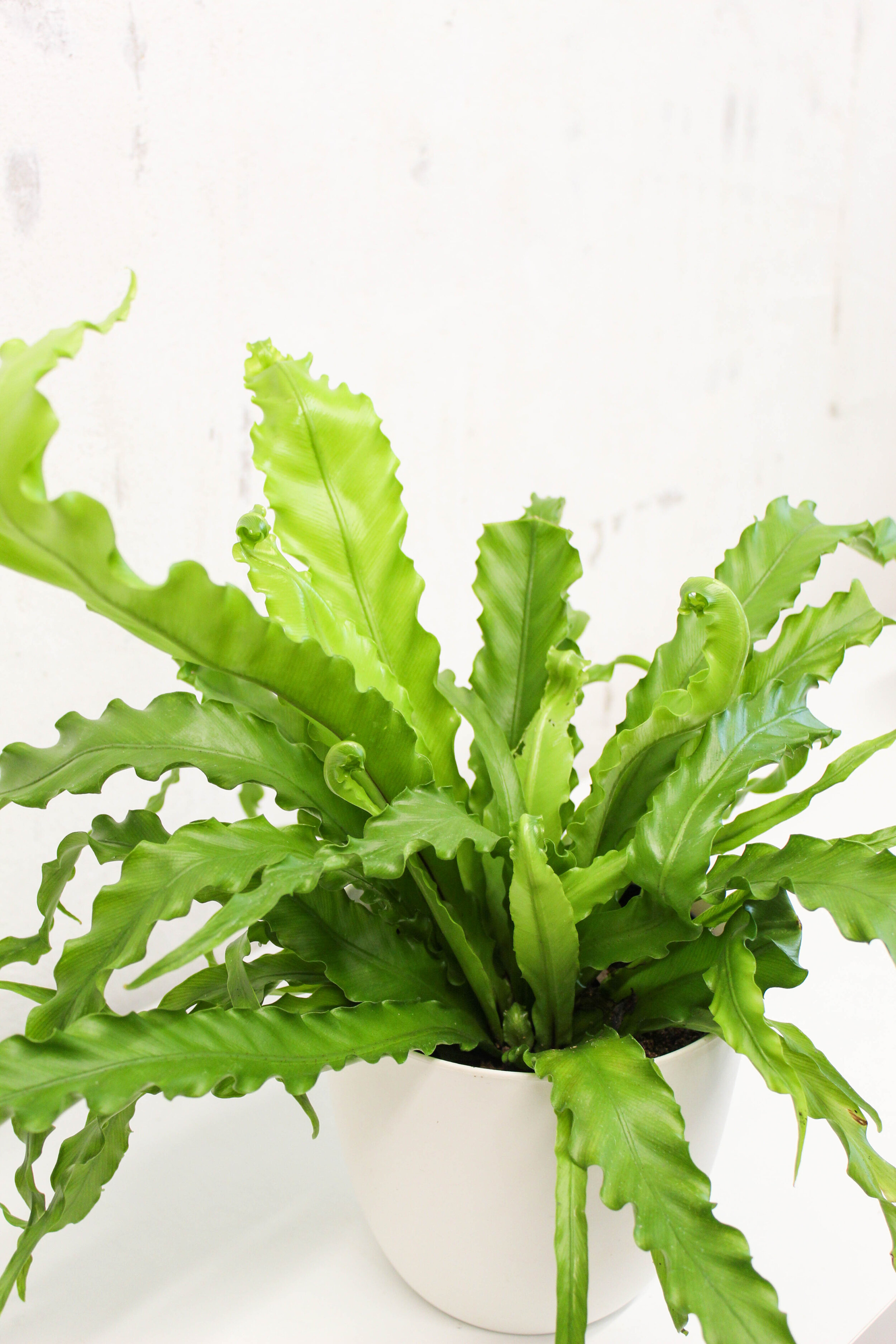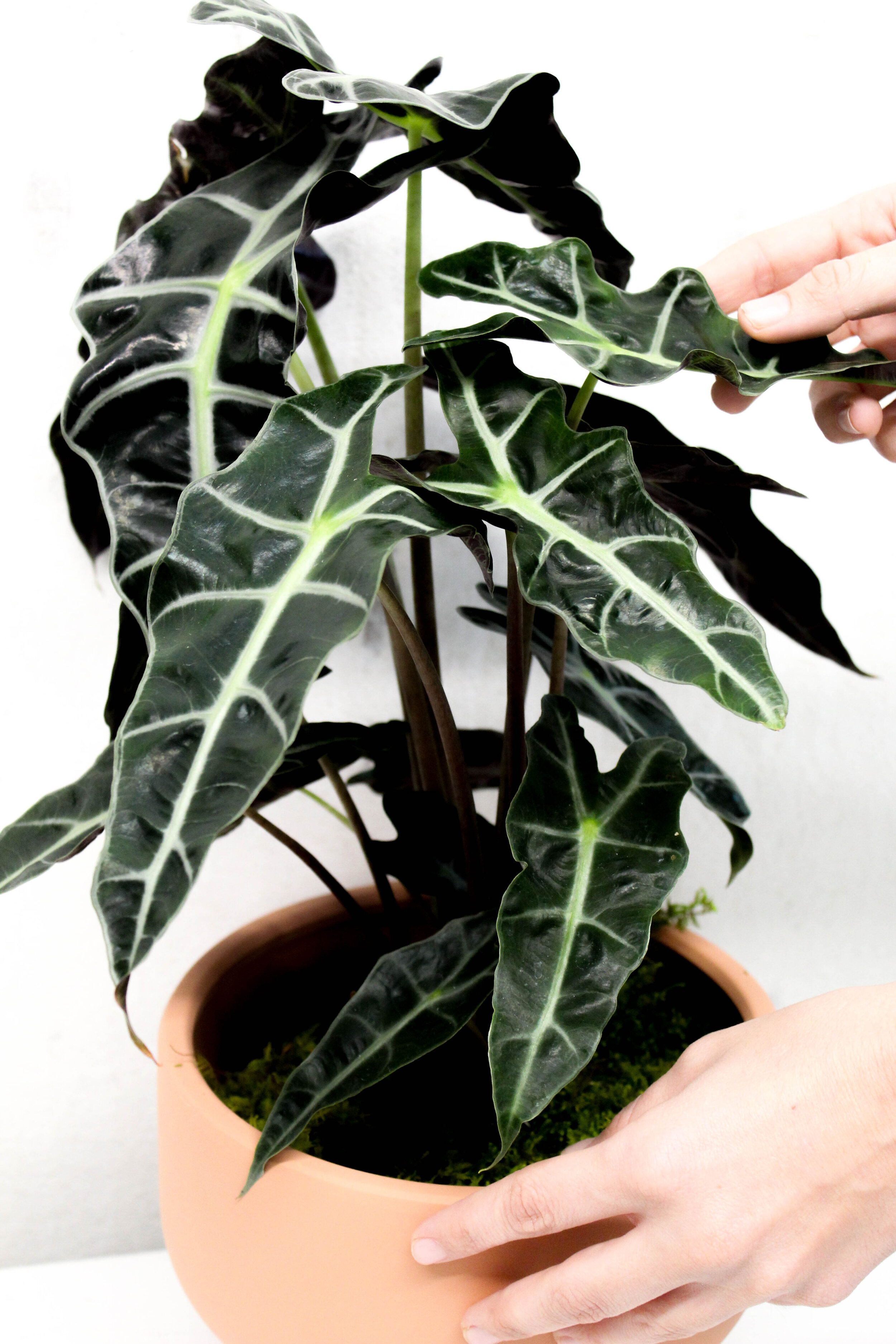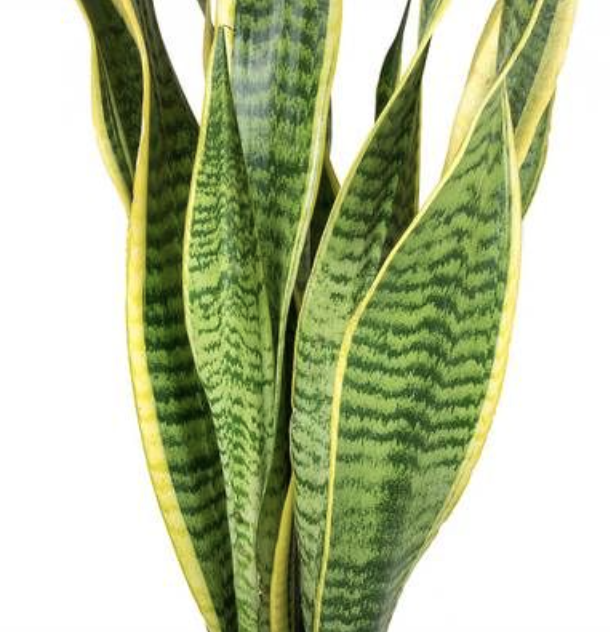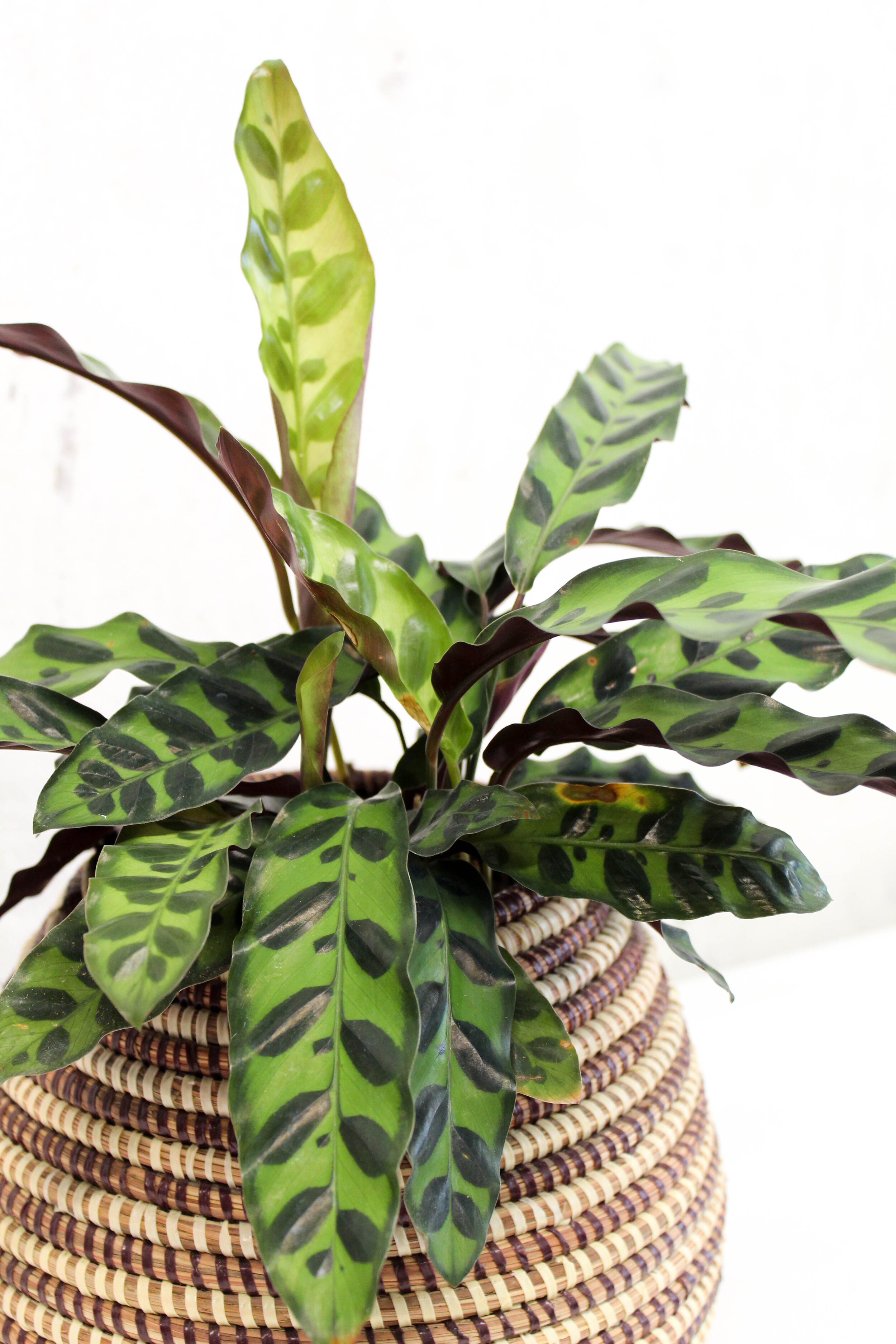Plant Care 101: Light, Soil and Water
The Science of a Plant
Light, water and soil are the most vital elements when keeping a plant alive. A solid understanding of how these elements harmonize to produce growth is the key to successful gardening.
Photosynthesis
Plants make food using the sun’s energy, a process called photosynthesis.
Leaves act as solar panels to draw sunlight in.
With sunlight, plants are able to convert carbon dioxide from the air and water from the soil into glucose, aka food.
Transpiration
As water evaporates from aerial parts (leaves, stems, and flowers) it causes a ‘pulling’ effect.
The plant uses water to siphon glucose throughout its system, while flushing out any excess minerals.
Water and nutrients from the roots are pulled up from the soil throughout the rest of the plant.
Oxygen Release
The breathing process of plants is what transforms carbon dioxide into oxygen.
Our waste air is transformed back for us by plants.
This creates a symbiotic relationship in the ecosystem.
Light
Light is the most essential element in determining your plants’ long term health.
You should always pick where you want your plant, then choose what plant works best there.
It’s a common mistake to do this in the opposite order and that’s when you end up with a plant in the wrong kind of lighting.
Research the origin of your plants
This helps you to understand how they thrive in the wild. You’ll need to adapt your habitat as much as possible to empower the plants’ growth.
Light requirements slide on a scale.
Certain plants will do better in low light, while others thrive in the brightest light available.
You’ll see below that certain plants like pothos can thrive in both bright light and low light - but not all plants are so tolerant.
When shopping for plants, take note of what kind of light they are currently in, what the typical lighting suggestion is and what lighting you have available in your space.
Finally, lighting changes throughout the day, so take note of how many hours your plant is in certain sunlight.
Bright Light
Direct sunlight
South or southwest-facing windows as far as 20 feet away.
East or west facing windows as far as 20 feet away.
On a windowsill with sunlight most of the day.
Remember: Intense, direct sun can burn plants. Filter light or place plants away from the window.
Medium Light
Ranging from bright indirect to partial or filtered
East or west facing windows up to 10-15 feet away.
South or southwest facing windows — min. 10 feet away up to 15 feet.
North-facing windows 3-5 feet away
Low Light
Minimal light
North-facing windows — no more than 20 feet away.
South, west or east facing windows that are facing courtyard or blocked by another building nearby.
Foyers & stair landings — with no natural light, but lots of fluorescent light all day.
Rule of thumb: if it’s too dark to read a book, then it’s too dark to have a plant.
Soil
Soil is a mixture of organic matter, minerals, gases, liquids, and organisms that together support life. Soil provides a base for the plant, and a place for water to be received and transported. Some soil mixes have a composition that allows water to drain easily, while others hold moisture for longer periods of time.
Know your plant - Knowing the origin of your plant type is the key to knowing how to create a proper soil base. Cacti and succulents from arid regions prefer fast draining, sandy, and rocky soils. Big leaf tropicals prefer bark-heavy mixes that allow large roots to grow with plenty of air, while holding moisture for longer periods of time. Proper drainage is key to not causing your plant to suffocate or
Mix your own soil - You can purchase specialty soil for any type of plant, or mix your own with various substrates. Common mixes include Perlite, sand, rocks, pumice, orchid bark and horticultural charcoal.
Feed your soil - Different from fertilizing, feeding your soil is an important step in maintaining the quality of nutrients in potted plants. Your soil is a functioning ecosystem in itself, and needs to be replenished. Potted soil is cut off from natural enhancers such as worms, bugs, bacteria, so feeding micronutrients can help to prevent the soil from becoming susceptible to disease and stress.
Water
It is essential to water your plants after they’ve been exposed to sunlight. These elements all work together, and finding the balance between the ideal amount of sun and the right amount of water will empower growth.
Know your plant - Study your plants origin and learn how and where they store their water. Knowing how and how often plants receive water in the wild can help to shape your perspective on what you need to provide.
Desert plants, like succulents, hold their water in their hardy leaves and despise sitting in wet soil, often succumbing to root rot.
Tropicals such as monsteras are used to receiving lots of water in forests and jungles, and love drinking up water regularly.
Epiphytes (staghorn ferns, orchids, tillandsias) soak up their water through their roots directly and do not require a soil medium.
Test the soil - Get your hands dirty! Watering your plants is a time for self care and connection, the best way to truly know if your plant is thirsty is to feel the soil for yourself. Dig 1-2" down in the pot and assess the moisture level; depending on what type of plant you have, the level of dryness will tell you if it’s time to water, and how much is needed.
Choose your watering method - You can water your plants by pouring it on the top of the soil, or by bottom watering which consists of letting the plant sit in a tray that contains water. We find that tray watering is more effective because the roots of the plant determine how much water they need and soak it up accordingly.
Water evenly around the plant - Most plants absorb water through their root systems, and it is imperative that the water is distributed and absorbed evenly, so the growth is even.
More light = more water and vice versa - Reduce frequency of watering in winter when plant growth is slower and temperatures are lower.
Distilled vs. Tap vs. Rain - Some plant prefer distilled water, while others will do fine with tap. Know what your plants require and follow that routine. That being said, we love to take our indoor plants out for rain when we can for a true touch of Mother Nature.
By treating plant care as self care, you can empower your garden to thrive.
Create a consistent ritual to care for your plants. Taking the time and effort to nurture other living elements in your space can result in feeling a feel a sense of well being and pride. These feelings are shared universally by humankind when connecting with nature in a meaningful way, which we define as a true sense of biophilia. Get to know your plants, what they truly need to thrive and enjoy growing with them.









